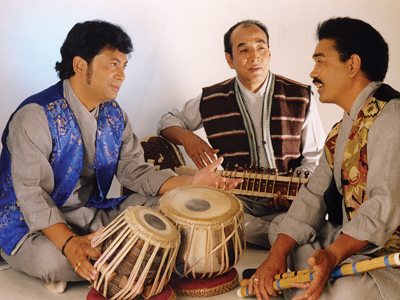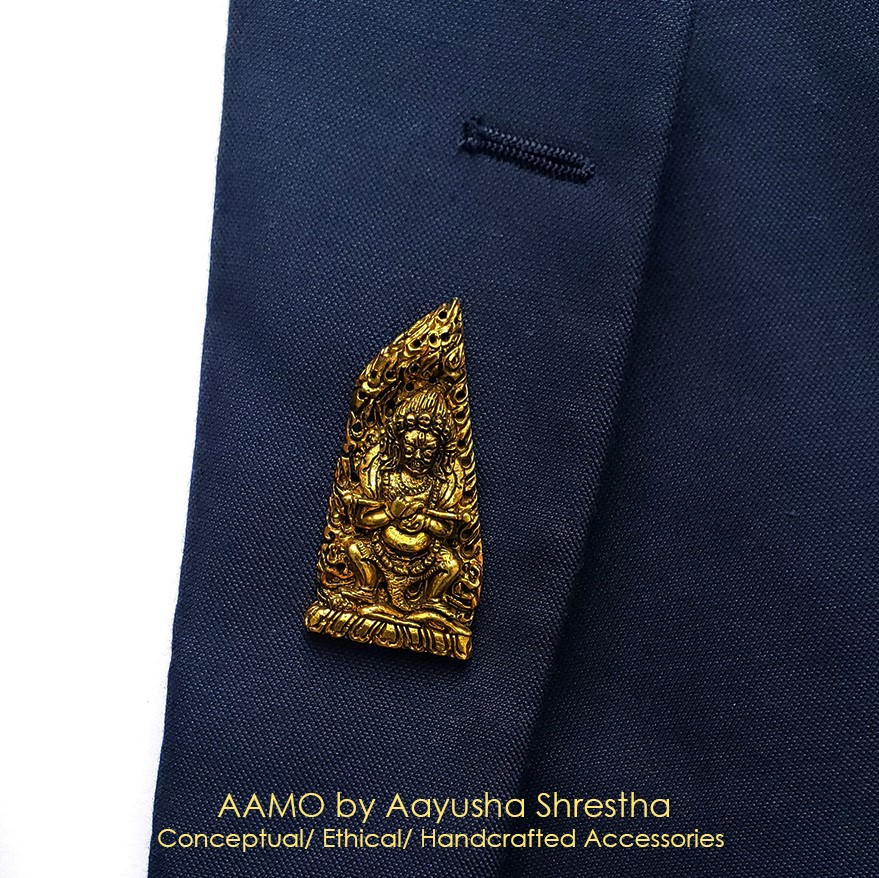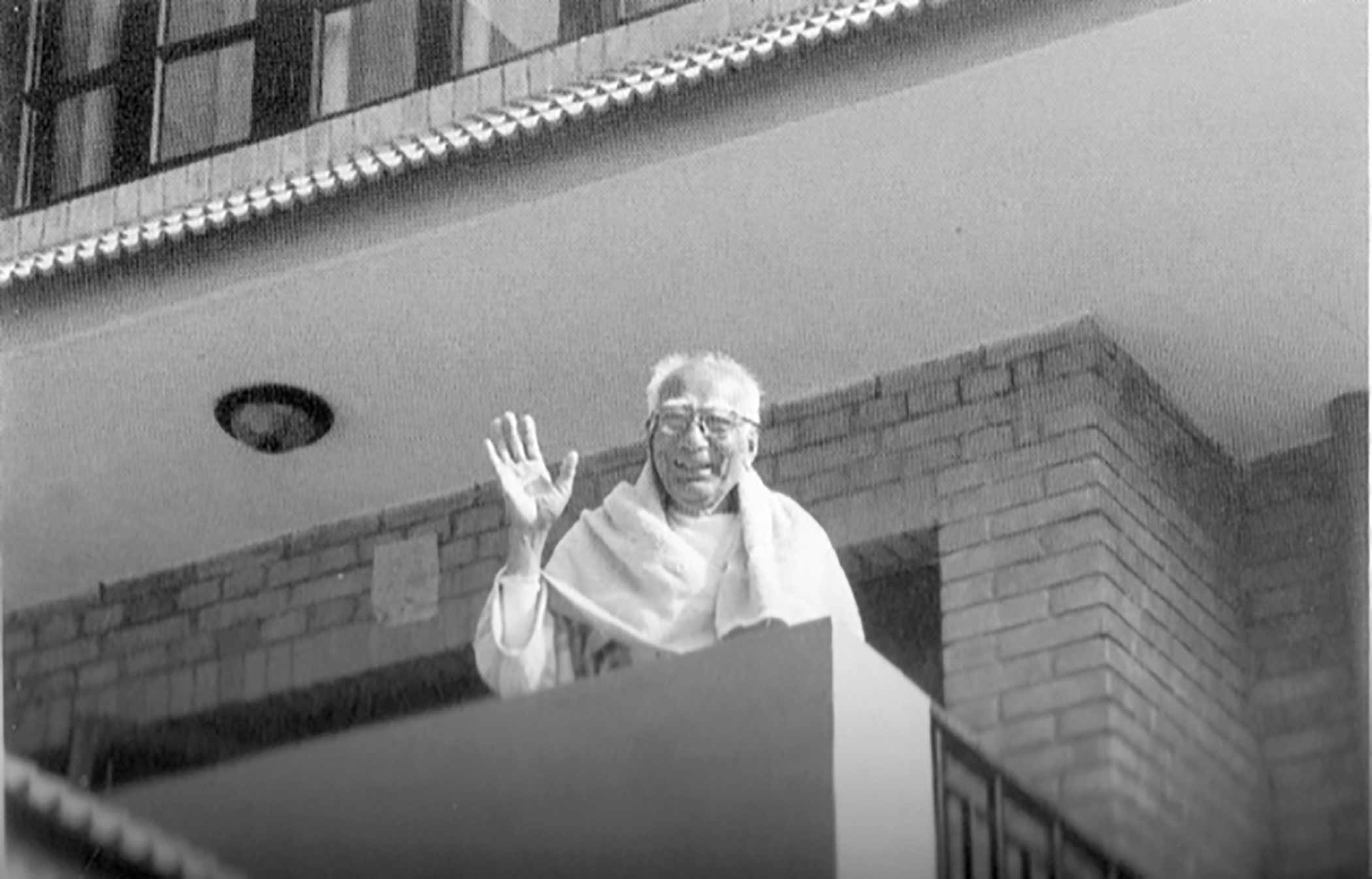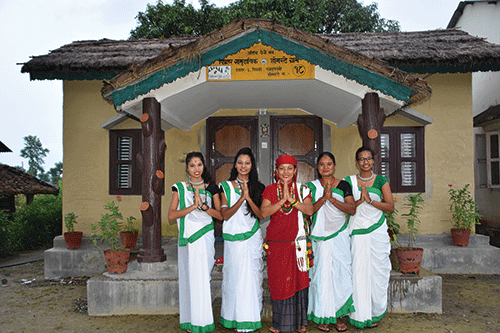Nepali musicians, both classical and fusion, have made their mark in the international music scene. Sur Sudha, Sukarma and Manose Singh are some of the most sought after artists when it comes to world music. Their style of music, their skill and expertise have mesmerized thousands of listeners not only in Nepal but in most parts of Europe and America. They are considered exotic not only because they play music of the Himalayas but because they have managed to hit the right chord in people’s heart.
Music has no boundaries and when it comes to Nepali classical and fusion musicians, they have traveled round the globe leaving listeners of different culture inquisitive about their music and about Nepal. Some of them have even started teaching music to foreign nationals and in the process have educated many about Nepali culture, art and tradition. Although their music in Nepal has not gained as much popularity, they have performed with some of the legendary musicians and maestros.
Many such Nepali musicians, who have experienced aura of applause in concerts from places like Rome to the Millennium Dome in London, have had humble beginnings. They are the masters of their own style on different instruments. But what all of them have in common is their undying passion and dedication to music.
 The Trendsetters : Sur Sudha
The Trendsetters : Sur Sudha
In 1985, a few young people who were passionate about Nepali classical and folk music gathered at the French Cultural Centre (today, Alliance Frances) to participate in a music competition. Till then, this band had no name. Since it was a prerequisite that the group was known by a name rather than as individual performers, they were compelled to search for a suitable name. After much
research, they decided that they would call themselves Sur Sudha.
Undoubtedly, they captured the audience’s attention by their unique style of playing Nepali folk music on classical instruments. They were awarded the exposure they had been looking for in the guise of the first prize in the competition. Sur Sudha had their international debut performance in 1990 in France and since then, there has been no looking back.
Sur Sudha over the years has given astounding performances with world renowned maestros like Ustad Zakir Hussain, Pandit Hari Prasad Chaurasia and Gulam Ali in Kathmandu. “Two of the most memorable performances of Sur Sudha were when we had the opportunity to fuse with Kitaro, the Japanese composer and when we played for hundreds of Nepali listeners at the Stadium for the South Asian Games,” said Surendra, the tabla player. Surendra Shrestha, who has received a master’s degree in music from Prayag Sangeet Samiti, Allahabad, India considers being on the stage with some of the world’s cream their biggest achievement.
The pioneers of promoting Nepali culture through music, Sur Sudha has performed for audiences back home and abroad. But their performances in Europe outnumber the ones here and Surendra says that one of the reasons they love performing for the outside listeners is their special interest and feedback. “The audience in Europe is interested to learn more about our music. After every concert, many approach us to inquire about the instruments, our attire and Nepal. This gives immense satisfaction and encouragement and we have almost gotten addicted to it.”
In twenty years of their musical journey, Sur Sudha has imprinted melodies on people round the globe. Today, Sur Sudha have established themselves as one of the most popular and respected bands that play music with Nepalipan on eastern classical instruments. They were the trendsetters for those who sought to make Nepal popular for its traditional tunes. With their unique combination of tabla (Surendra Shrestha), flute (Prem Rana Autari) and sitar (Tarabir Tuladhar), Sur Sudha is truly the Nepali ambassadors of music.
Relentlessly Strung : Anil Shahi
Anil Shahi, a shy eastern classical guitarist panicked before he was to play at the Millennium Dome in London in 2000. It was his first debut performance for an international crowd. Only two days before, the Dome had come alive for pop stars Ricky Martin and Jennifer Lopez. Being his first performance ever in a crowd of that size, Shahi sweated until he started playing. The only memory of that performance later says Anil, was the echoing applause from the audience.
At a very young age of 13, Anil Shahi was certain that his life was going to be dedicated to music. With the sole purpose of learning music, he attended Gurukul in Banaras, India, where he relentlessly served the gurus of music for almost eight arduous years. Although he started as a student of classic flute, he ultimately found his niche with the strings of a guitar.
“Guitar is an instrument invented in the West and my specialty is eastern classical music. Combining the two is a challenge and I get an adrenalin rush every time I accomplish it,” says Shahi, who has also been composing music for Nepali feature films and already has nine films to his credit as a music director.
Anil Shahi with his peculiar style hitting classical notes have won him many fans in Nepal and abroad. He has till date traveled to India, Malaysia and England and is already booked for a series of shows. His first fusion debut album – Maya Mantra was a huge success, which established him as one of the great contributors of Nepali fusion music.
Holding a native western instrument and churning classical Nepali music, Anil Shahi has a reason to shy off from the crowd and that’s because he says, “there is still so much more to learn and I do not justify my music by flaunting the little skill I possess.”
The Sitar Guru : Dr. Drubesh Chandra Regmi
A fourth generation sitarist, Dr. Drubesh Chandra Regmi groomed himself under the guidance of his father and later became a protégé of the prominent sitar maestro Pundit Uma Shankar Mishra of Delhi. Though a student of Law, he has a colorful musical academic background. He was awarded Doctor of Philosophy in his thesis “The History of Music in Nepal with Special Reference to Classical Music during the Rana Period” from Delhi University, India, which substantiates his conscientiousness to the art he genuinely pursues.
“Classical music is the grammar of our traditional music. It is rigid and not digestible by all,” Dr. Regmi explains, “which could be the reason for it not being sellable with the modern listeners. Moreover, it is not patronized, facilitated and supported by the concerned authorities and has not received the importance it deserves.”
He also shares the responsibility of not being able to educate the locals on its value. He does not agree on its unpopularity and leaves the discretion to the public by saying, “How would you sample the popularity of classical music? Have you ever attended the classical music festival in Kathmandu or Kirataeshwor on a full moon night? Or have you just been acclimatized with personal opinions?”
His performance beams with the instant vocal response from the Eastern audience, as that is the characteristic of a classical concert this side of the planet. Though this is not the case with the western audience, who are earnestly demure, patient and respectful towards the performers, Dr. Regmi enjoys both audiences.
His first performance abroad was on a cruise ship in Hong Kong in the year 1990, the first milestone of his international career. He has also visited Italy, Germany, Austria, USA and the Kyrgyzstan with his music. Recipient of numerous national and international awards has not blemished his gentle eminence.
The demand for variation in music has inclined Dr. Regmi and the troupe that he belongs to Sukarma, to improvise classical music with folk. They seek to inspire appreciation of traditional music in young generations by playing raga and indigenous folk music in a way that is faithful to the spirit of the music but has a modern flavor. Having improvised with the likes of Peter Rowan, Danny Paradise, playing blues and jazz, he still has maintained his classical roots. At present, he has a few students who are learning the art without him charging them. He advises the aspiring musicians about the importance of education while perusing the path of music.
The theme of his music is “Peace and Harmony” and we sincerely hope it prevails.
Classical and Fusion Enlightenment with Ashish S Ashish Sinha is a development consultant and also into academics. However, he is better known as the Guitarist Ashish Sinha. He is constantly in touch with creating music and has recently come up with a self produced instrumental album titled: Mind Your Head, which is a crossover into the less chartered territory of Conceptual Music.
Ashish has been writing and recording original interpretations of traditional Nepali music. His unique left-handed guitar playing creates his signature experimental tunings, allowing him to effortlessly merge traditional and contemporary Nepali melodies. He performs on acoustic, electric as well as Nepali percussion. Shristi, the sole fusion act in the late nineties which popularized fusion music in Kathmandu was the brainchild of Ashish.
Ashish shares his knowledge on Fusion music with ECS.
Define Classical and Fusion Music
Classical music as I see it is music built by a certain regiment of a traditional society and civilization. It is enshrined with structures and regulations. It is a school in itself, and learning is systemic; only long term dedication or ‘tapasya’ leads to enlightenment for a classical musician. For us in Nepal, we generalize classical music in two categories: eastern and western. The eastern is also widely generalized as South Asian classical, however, the classical music played in Nepal has its roots in North Indian classical music. Western is obviously music born of western civilization.
What is fusion basically?
I read that John Mayer, a violinist of the London’s Royal Philharmonic Orchestra staged a program called the ‘Indo Jazz Fusion’ in the 60s. The performance was based on experimenting with raga taals with western compositions and his manager Don Norman, who coined the term Fusion.
Fusion music is also in a way a space created to subside one’s desire to experience the ‘other side’. Some Indian writer used a terminology, ‘Karma Cola’, which in a sense characterizes Fusion Music; the desire for western and eastern cultures to experience each other’s culture.
Fusion is a loosely defined term in Nepal and elsewhere. For some, there are more preferable terminologies, such as ‘cross-over’ or world music.
What is the Relation between Classical & Fusion?
Actually relations are created by musicians themselves. Classical as said earlier is a discipline in its own, and fusion is in a way created by taking usable concepts like musical structures, beat or taala and ‘fusing’ it, creating contemporary music that is friendlier to the ears.
Classical music has restrictions but fusion does not because it is basically improvised music. Do you agree?
When musicians from different musical background come together, the obvious inclination would be to agree on some musical base and then build upon it with improvisations based on his/her musical orientation. Improvisation entails space for experimentation, where the musicians obviously feel elated. The process of improvisation moves them towards frontier territory. Improvisation is necessary in fusion music as musicians are playing with each other with a lack of proper stamping on each other’s music. It is instantaneous; a ‘riff’ on the left a ‘rela’ on the right, and the brotherhood of musical cohesion is formed. Eastern classical music does have restrictions; however, at the same time it has lots of room for improvisation. That’s the beauty of it.
If that is the case, is fusion music easier to perform?
There is some truth in what you have said. As long as you are well versed in your craft, a good ear to judge and ‘loosely’ comprehend the ‘foreign’ musical structures and timbre of the instrument, you are safe. But most importantly, you need to ‘have the groove’. As long as you’re not static (musically and personality wise), you can be a good fusion performer.
Performance of Fusion music can also be looked as whether it is collaborative or creative. The latter is perhaps more painstaking and rewarding as it takes more effort in terms of research and performance, where as the collaborative aspect is more like ‘jamming’ between performers of different cultures with little rehearsals.
Why do people in the west appreciate classical, fusion and world music?
Basically, the ‘foreigners’ as we call in Nepal are the folks who love to travel and understand different cultures. And obviously anybody with this interest will love classical and ethnic music as it portrays a good picture of any culture.
Fusion music can be more likeable to some as it is friendlier to their ears; it has juxtaposition of western music. Again, the instruments of the east are not that ‘alien’ to folks in the west, as bands like the Beatles have used them long time back…the name Ravi Shanker sounds familiar to many. But again, it is for those who like to reach out for other cultures. If you ask folks from say rural America – many could say country music still is all that matters!!
Breath of Music : Manose Singh
Perhaps the youngest of classical musicians who has made it into the international scenario would be Manose Singh who is vibrant, energetic and extremely talented. He carries a gifted persona though he confers more credit to his ear saying, “I play mostly by ear even though I studied classical raga music under the guidance of Madan Bhatta, a disciple of Ustad Bishmilallah Khan and at the Fine Arts College at Illahabad, India”.
His musical voyage started when he decided on making “Bansuri” – a bamboo flute, his focal instrument after hearing its haunting resonance one night at the age of 8. The poignant sound of the Bansuri mesmerized the young lad to such an extent that he constantly exercised five to six hours a day, emulating the music of Hariprasad Chaurasia, the authority on the instrument. Due to his demanding study with raga and his awe-inspiring ability to improvise, he has developed to be a versatile flutist who can collaborate with any variety of musical genres. He has no regrets for having made the choice. It not only has bought him fame and fortune but inner peace and stability too. His mission in life is to resurrect the value of the Bansuri within the Nepali society.
Manose resides in California and travels all around the globe with his music. His first international exposure was at the age of 18 when he travelled to Europe for the “Asian Music Festival” and has not looked back since. He performs almost 200 concerts around the world, a year. At present, he is a part of the ensemble “New Maihar Band” created by the living legend Ali Akbar Khan. He has performed and recorded with Grammy nominated fusion artist Jai Uttal and blue grass country great Peter Rowan. He has also crossed paths with singers Krishna Das, Deva Premal and Swapan Chowdary, the tabla maestro. He has performed in Canada, France, England, Switzerland, Germany, Hong Kong, Malaysia and recently Australia. He will be performing with the Chicago Children’s Choir in early 2006, depicting the Ramayana epic play.
His music is appreciated internationally due to the sound of heritage it transports. “I’m exotic out there” he quips and it could be one of the reasons for the accolades he receives. The sound of the Bansuri is chromatic with western instruments, when he fuses his music with theirs and that could be one of the other reasons, cont....
Breath of Music cont....
he seriously says. He identifies himself as a musical ambassador of Nepal where ever he performs, enlightening the audience about the culture, heritage, music and people of Nepal. At present, he teaches the Bansuri, Tabala and Madal and gives lectures on Nepali music and culture in the United States.
Though living across the seven seas, he still manages time to be an essential part of the music development back home but opines with a hint of sadness in his voice about the deteriorating musical trade in Nepal. He sighs in disbelief concerning the plethora of duplicated CDs and the lack of decree from the authorities. At this threshold of his musical passage, he expresses gratitude to the expatriate community and ardent Nepali classical music fans for their musical appreciation and support and also for understanding the importance of buying genuine CDs, though a bit expensive.
Manose breathes life into the Bansuri and creates evocative music. Music for him is Worship.
For the Love of Musicinha : Bijaya Vaidya
“If all difficulties were known at the outset of a long journey, most of us would never start out at all” ~ Dan Rather with Peter Wyden
As a teenager, Bijaya Vaidya remembers his first concert at a local college along with one of the established bassists of Nepal, Daniel Karthak, where they fused the instruments of the east and west to the song Jealous Guy by John Lennon. His musical journey with his ever-faithful sitar to the present has been bitter sweet but has no qualms about it.
Bijaya Vaidya is an established sitar virtuoso and in his career has helped establish numerous musical and cultural academies in Nepal. Though a student of Humanities he has completed his Bachelors and Masters Degree in Music from Prayag Sangit Samitee Music Academy in Allahbad, India. As he is receptive to latest musical technologies, he is also regarded a proficient recording artist and performer. He has performed in most major cities around the globe and has been promoting all genre of music from eastern classical to aboriginal forms of music. Most of his performances are dedicated to charity and fund raising for social works. He practices the philosophy ‘selfless help and compassion’.
His association and performance with Louis Bertignac whom he considers his sound-technology teacher and Yannick Noah, perhaps the hottest performer in France, are the highlights of his career. His versatility to accommodate himself to the theme of any concert or music is a trait few can master. He has also performed Celtic music with Arz Nevez and will be performing with Deep Forrest soon. His broad musical itinerary is packed for the next couple of years but promises to take time out to entertain us locals.
He adores the respectful, patient, gentle and disciplined audience of the West who appreciate his music and performance. Though he yearns for the warmth and interactive approach of the locals, he is saddened by the misuse of his music and narrates an example while watching a televised program on cooking. His musical “Music of Peace” was playing in the background while the chef of the cooking program was chopping fish into dices. With contemplated words he explains that old papers and bottles are valued but not his music by the locals.
Come rain or shine, Bijaya Vaidya and his music has withstood the test of time.











